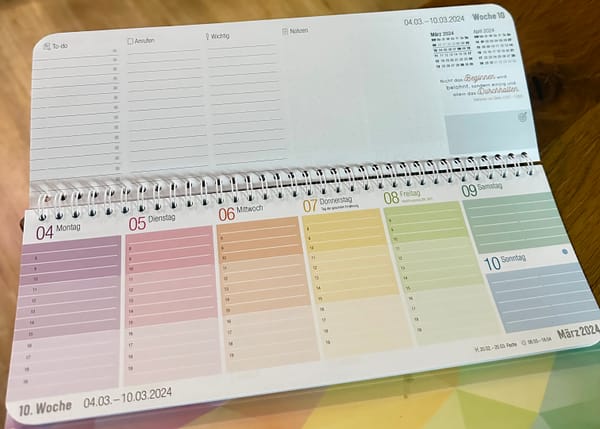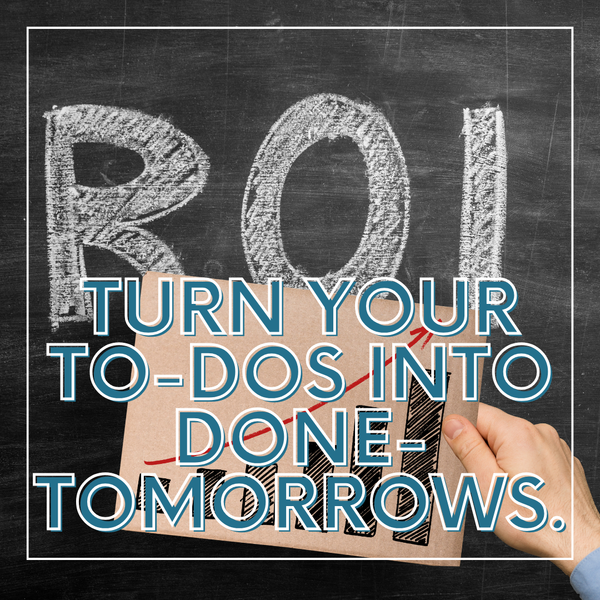Personal Kanban - The magic of tangible and visual task management
Explore Martin's shift from digital overwhelm to a tactile Kanban system for task management, enabling him to visually and physically organize goals, tackle "Eggs to lay," and define a realistic daily capacity, while considering how to balance this with maintaining digital notes.
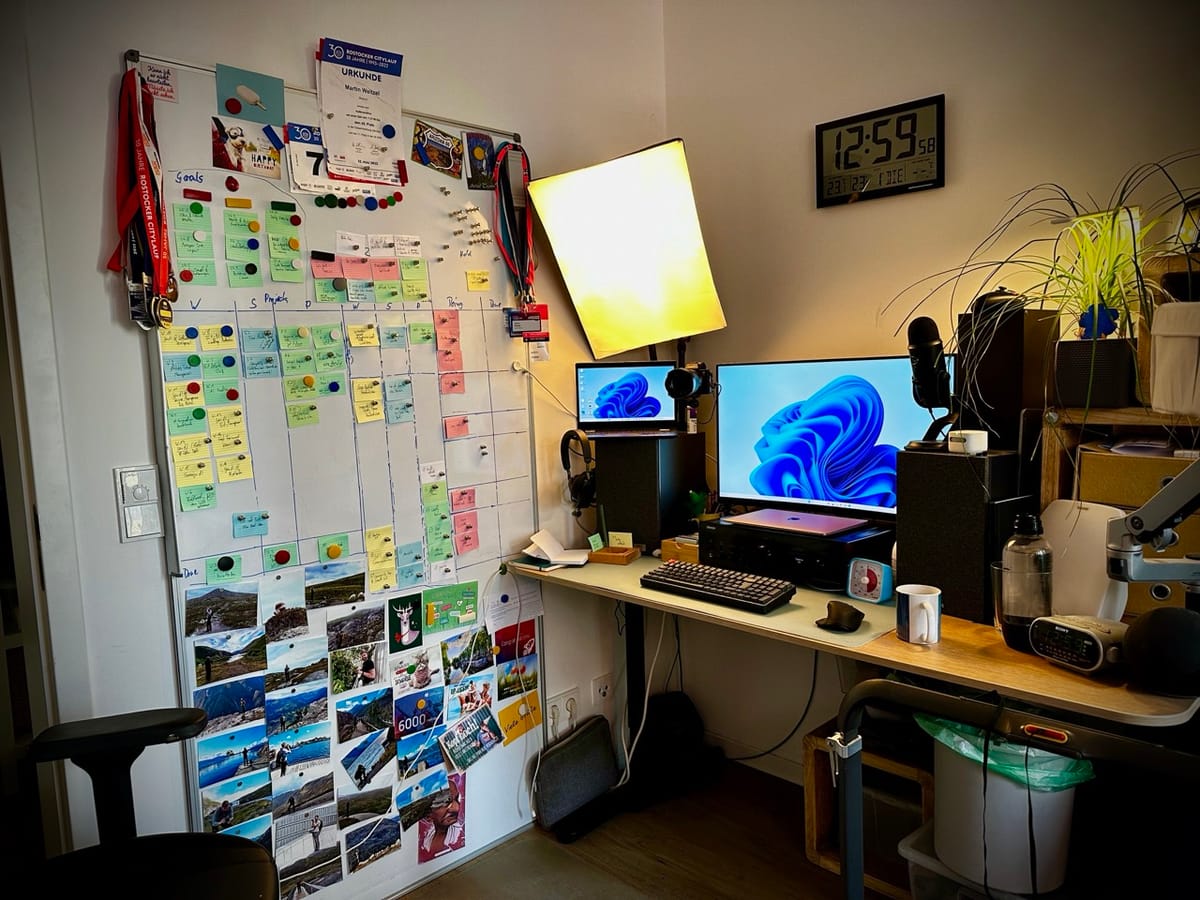
Complicated digital note-taking and task management can lead to overwhelm
Last year, I was quite unhappy with my digital note-taking and task management. It worked well in that no reactive tasks slipped through my fingers, and I could easily find essential notes.
However, I found it hard to get a big picture of my status, tasks, plans, and goals in different areas of my life at a glance.
The information was there but had to be painstakingly brought together through tags, search queries, and links within my notes.
This was particularly difficult on stressful days when I lacked the mental capacity for overly complicated notes and tasks, leading to feeling overwhelmed and dissatisfied.
At the beginning of the year, I tried something new: Kanban on a whiteboard
I got the idea after reading Jim Benson's book Personal Kanban ("Mapping Work, Navigating Life"). The promises of the book sounded good:
- Being able to see all essential tasks and their status at a glance
- Pulling tasks from the backlog into today's "Work in Progress" on the spur of the moment rather than push-scheduling them for future days
- Flexibly structuring the cards according to the situation on a whiteboard
- The liberating physical feeling of moving cards forward in the process or even taking them off the board at the end
- The limited space on the index cards and board, which forces you to think in limited capacities
The Kanban method can be as simple or as complicated as you like - in principle, it just means trying to structure tasks that are each written on an index card or Post-it in two dimensions:
- Columns: The status in progress (e.g., Backlog, Work in Progress, Done)
- Rows: The task area (e.g., Work, Learning, Family, Finances, etc.)
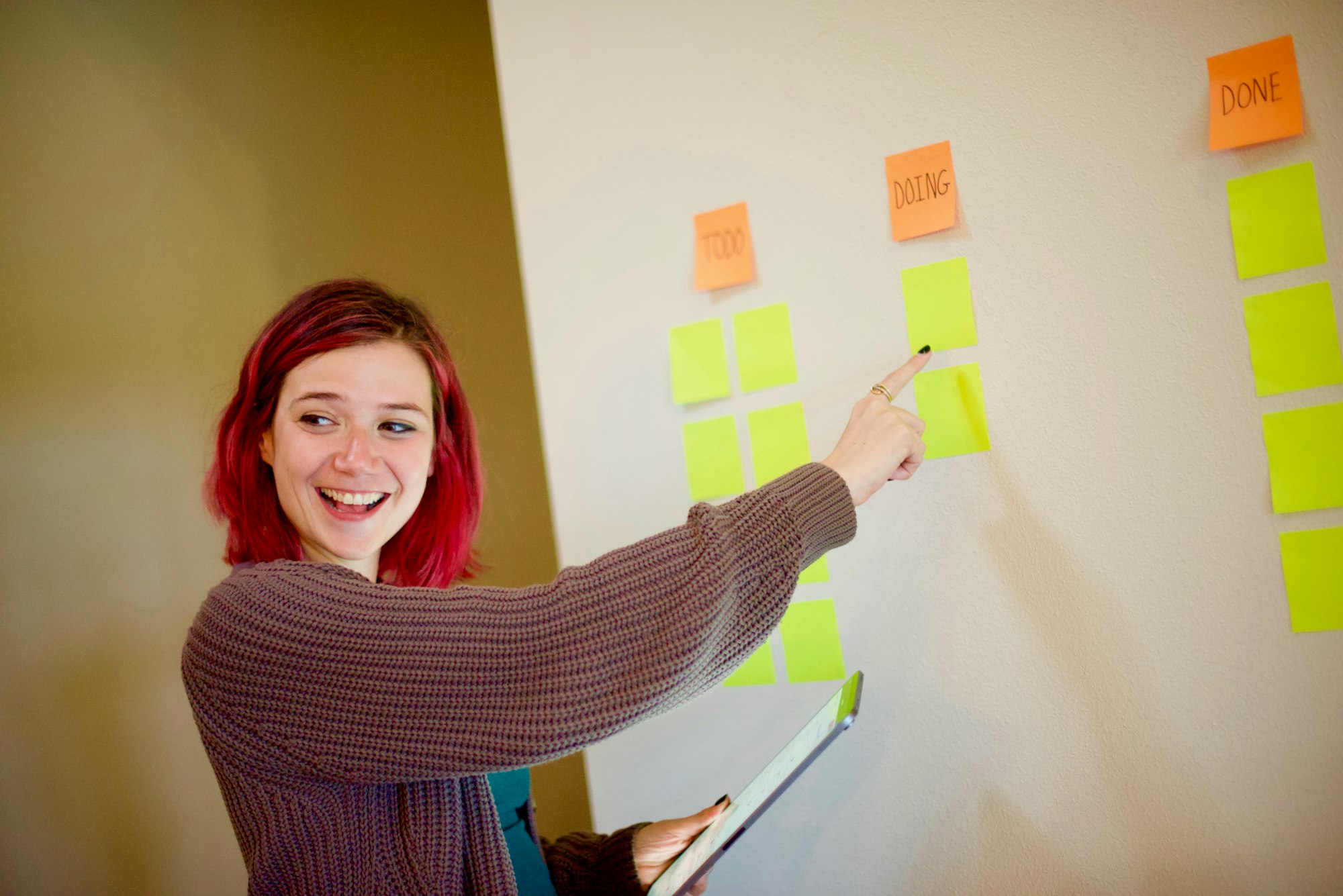
In the simplest case, it's just a table with three columns, where all the tasks you have in front of you are noted in the "Backlog" column. You can pull up to 2-3 cards from the backlog into the "Work in Progress" column to work on them and move the completed cards into the "Done" column.
The trick is to limit the cards in the "Work in Progress" column to avoid working on too many tasks simultaneously and to complete the defined scope before new cards can be drawn from the backlog. This prevents endless procrastination on cards and repeatedly pushing them back into the backlog.
Another nice thing about the method is that you can pull tasks from the backlog into "Work in Progress" as appropriate on a certain day. That means you don't have a preconfigured to-do list in front of you that was defined a couple of days ago, with tasks that might no longer fit the current situation, but you can pull precisely the cards from the backlog that is right and timely for the current moment.
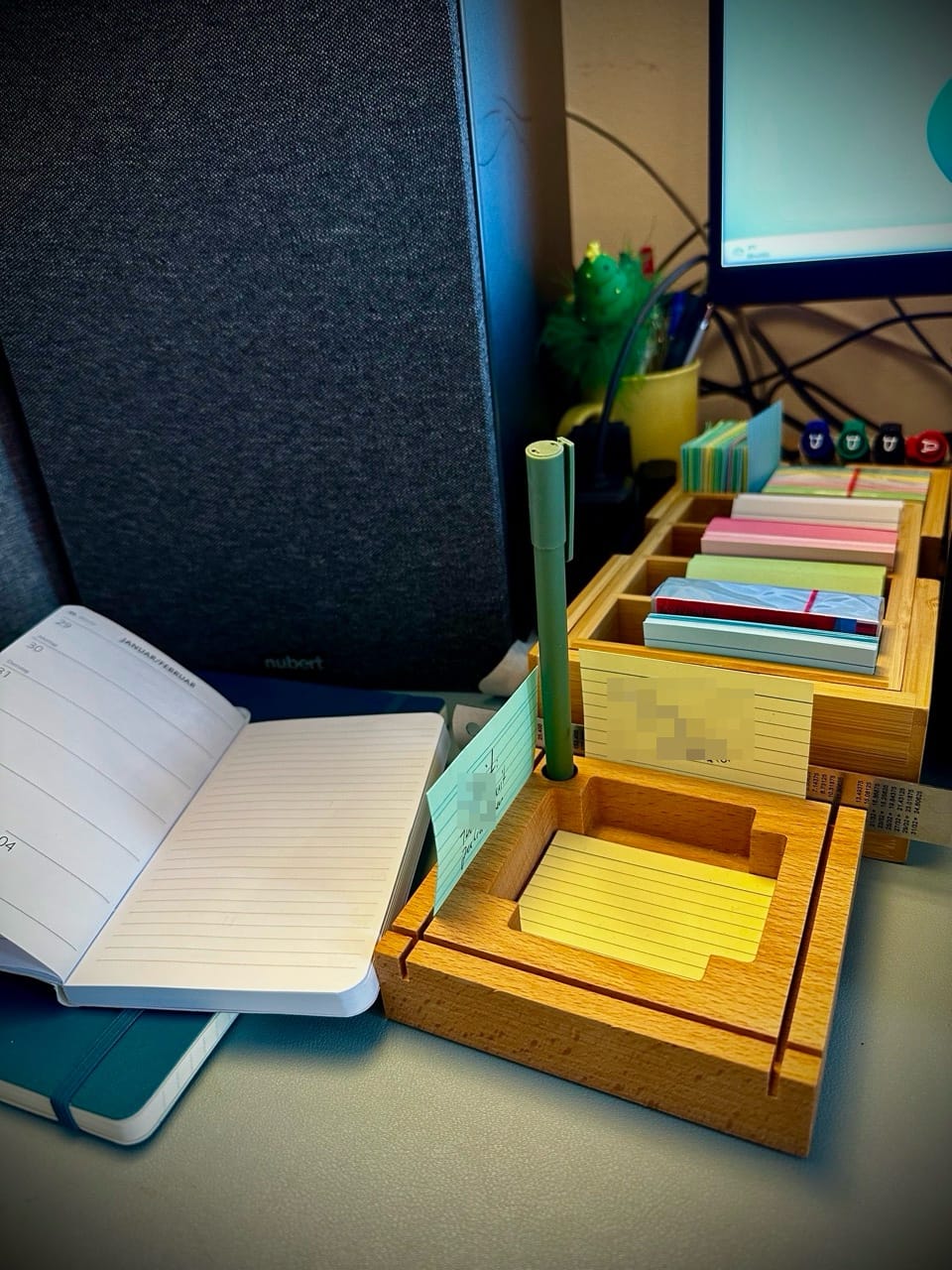
My Kanban configuration
In my interpretation of Personal Kanban, I've moved away from classic Kanban and instead built a kind of map with different levels of abstraction of my goals, plans, and tasks:
- In one area, I have my nine goals for 2024 spread across three columns: Green, Yellow, & Red.
- That means I reflect on the progress of my goals on the weekend and assign an appropriate traffic light status.
- For green goals, I do nothing. For yellow and red goals, on the other hand, I proactively think about measures I can take this week to enable goal achievement.
- I track my current problems, challenges, and responsibilities in a second area. I call them "Eggs to lay" to remind myself that the goal is to complete the cards eventually. Otherwise, I tend to drag such projects on endlessly, and at some point, they clog up my mental capacity for new things.
- I structure these cards into three columns: Work, Personal, and Side Business. I currently have 22 "eggs to lay" spread across the three columns, which is far too many, showing an overcommitment and a lack of single focus.
- The higher a card is in a column, the more urgently I want to work on completing it.
- Each week, I aim to work on precisely two cards from each column, meaning I have the "Most Important Thing" for 6 out of 7 days (the 7th day is a rest day), which I tackle directly in the morning.
- But, of course, the "Eggs to lay" can't usually be completed within a day (otherwise, they'd be simple tasks), so the goal is not necessarily to finalize them but rather to invest 1-2 hours into the topic.
- In a third area, I track my tasks. It's my backlog, which I've divided into three columns: Work, Personal, and Side Business.
- The higher a card is, the more important or urgent it is.
- There's also a feature for recurring tasks (e.g., writing a weekly newsletter for my side business). I place these recurring tasks at the bottom of the columns.
- In a fourth area, I have my ideal day divided into a table with (ToDo/Done) and six time slots:
- Morning: Journaling, reviewing notes and tasks, and doing strength and endurance sports. There's no room for additional cards, consisting only of routines.
- Forenoon: A narrow "Eat the Frog" column where I can place just one more card as a ToDo (my Most Important Thing of the Day).
- Noon: Besides my lunchtime walk routine, I can push another card here - for example, a podcast/audiobook I want to listen to or a phone call I need to make while being on my walk.
- Afternoon: There's space for up to 6 cards, ensuring they're no more extensive than 30-45 minutes. This is when I do my meetings, but I don't note them on the whiteboard.
- Evening: Mainly routine cards again, but I also have buffer space to push in any important tasks left from the day if necessary.
- Additionally, I have two more areas:
- "On Hold": Here, I park cards that I can't progress on for some reason, like waiting for feedback from a colleague.
- "Intentions": Here, I jot down reminders to myself about behaviours I want to adopt, such as "Single-Focus" or "Active listening".
The exact structure of my Kanban changes weekly to fit current circumstances. The beauty of Kanban on the whiteboard is that the structure doesn't have to last forever. (In the Second Brain PKM scene, many people strive for a structure and system that can work for their entire life – in my view, an impossible feat.)
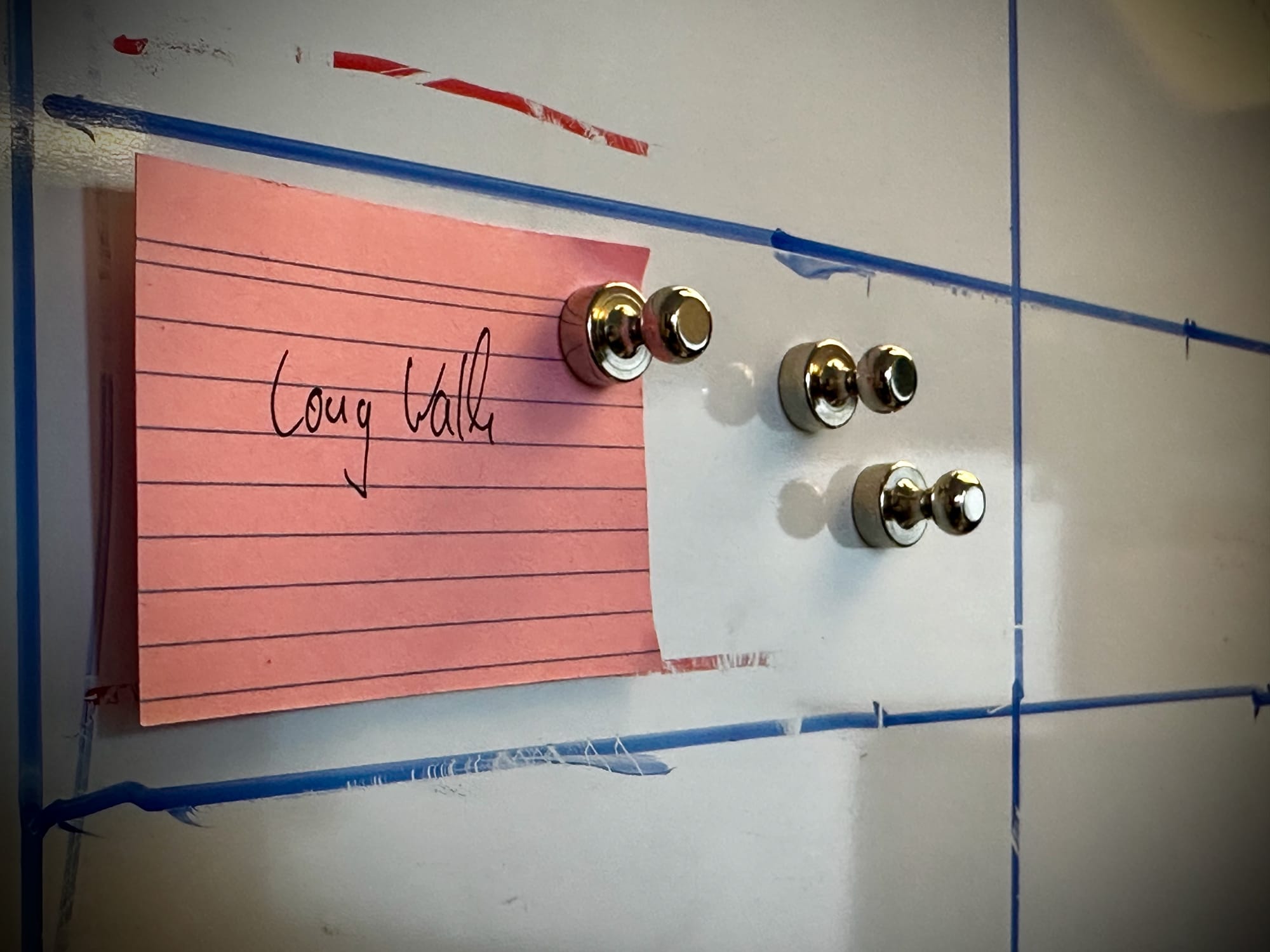
The promised benefits have come true.
Now, to my experiences: The aforementioned benefits of Kanban have been confirmed. Being able to capture the most important things at a glance on the whiteboard makes one feel very organized, nipping any feelings of overwhelm in the bud.
The limited space also means the day has a realistic definition of done - something I've never managed with digital task apps, as I always planned too many tasks.
Moving "cards" forward physically feels good.
The biggest drawback comes from working with the visual Kanban on the whiteboard and maintaining digital notes in parallel. This is for trivial reasons sometimes, like jotting down all the thoughts that come to me during the day in an app (Drafts) - some may not even be relevant to my Kanban, but some are.
On the other hand, tasks sometimes arise from meeting notes, which I also prefer to manage digitally.
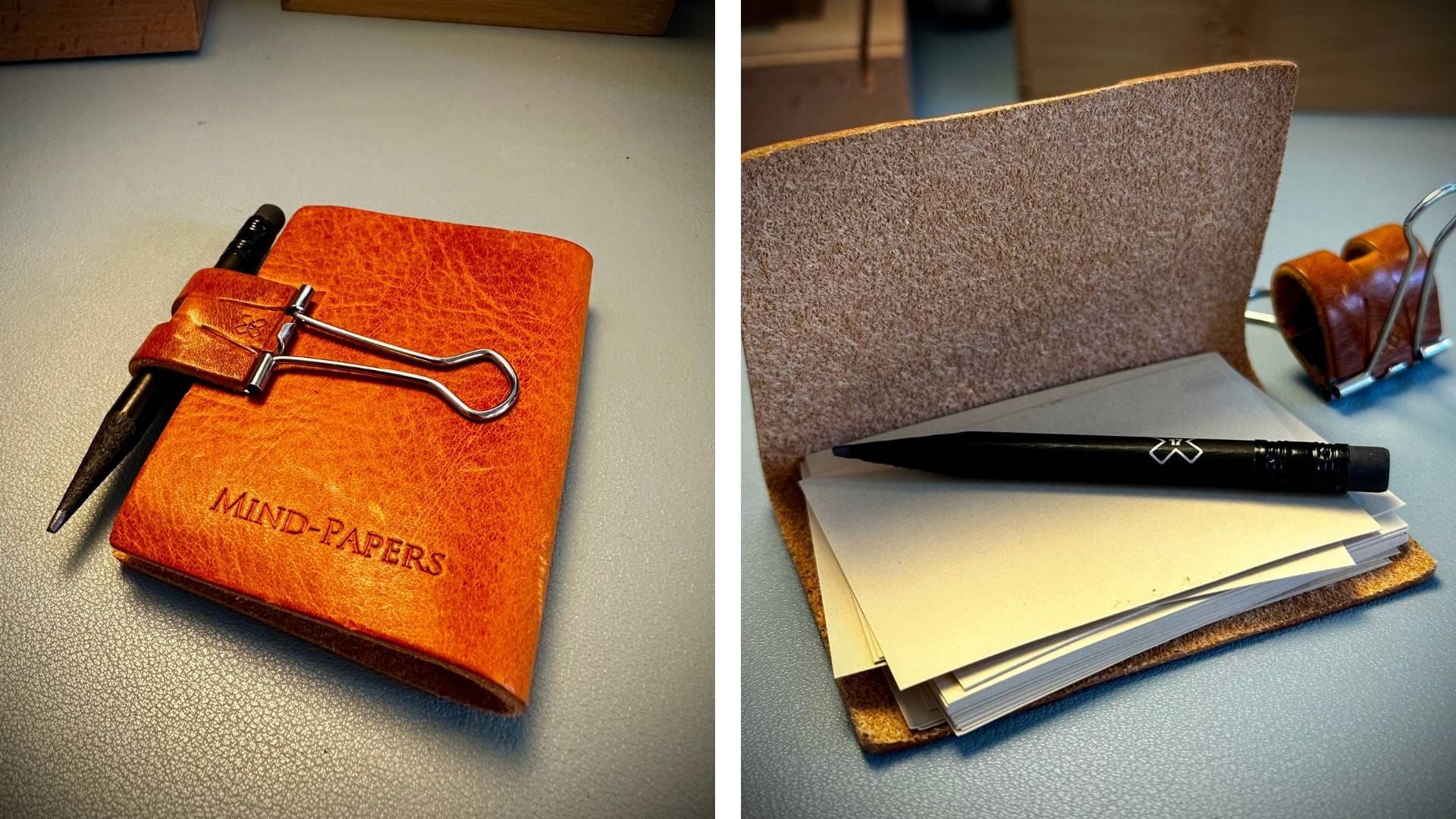
This results in a double structure: my digital notes with everything noteworthy and my whiteboard with the essential tasks and plans.
The extra effort to keep both worlds consistent leads to too much overhead.
This is why, in the following steps, I must think about how to separate both worlds cleanly. Ideas include:
- Tracking only what's relevant for the current week on the whiteboard and the rest digitally.
- Managing proactive tasks and deliverables on the whiteboard and reactive tasks in the digital to-do app and notes.
- Organizing exclusively on the whiteboard and viewing digital tools only as an archive/vault.
I'm not sure which way to go yet.
Otherwise, I'm excited about the visual and tactile system. Advantageously, I could lean on a whiteboard right next to my desk. Those with less space will undoubtedly need creative solutions (I read that some people use a mid-sized mobile board or a smaller magnetic board for this purpose).
The only other downside is that sometimes I can't read my handwriting, and I have to buy index cards occasionally and get quite a few magnets. But these are manageable costs.
Another advantage is that this approach has me writing by hand again, something I shockingly realized I hadn't done in months.
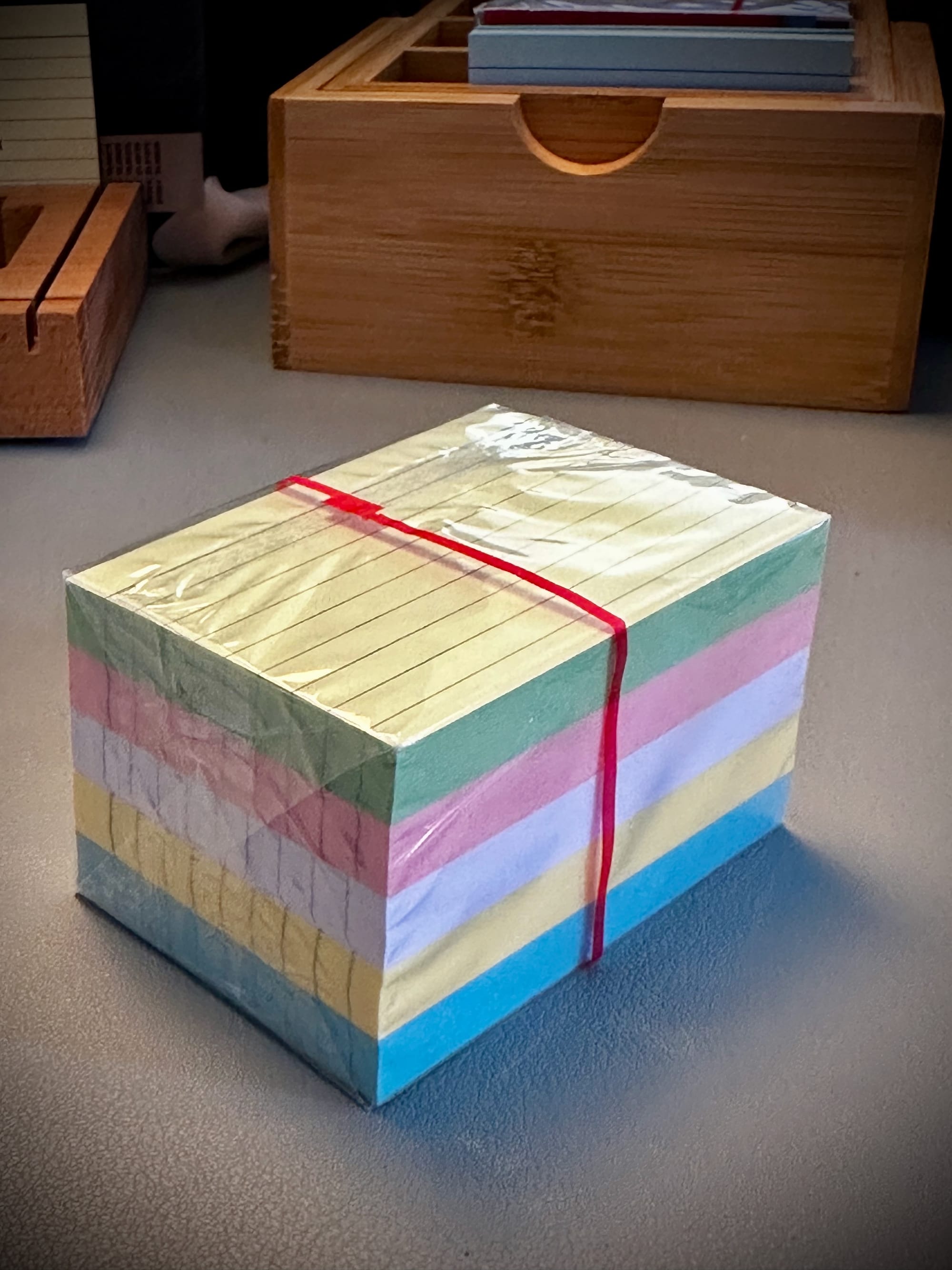
How do you manage your tasks and notes?
Do you also use "analogue" tools like paper notebooks, whiteboards, Kanbans, and Post-its, or do you organize yourself purely digitally?
Feel free to share in the comments!
Best regards
-- Martin


